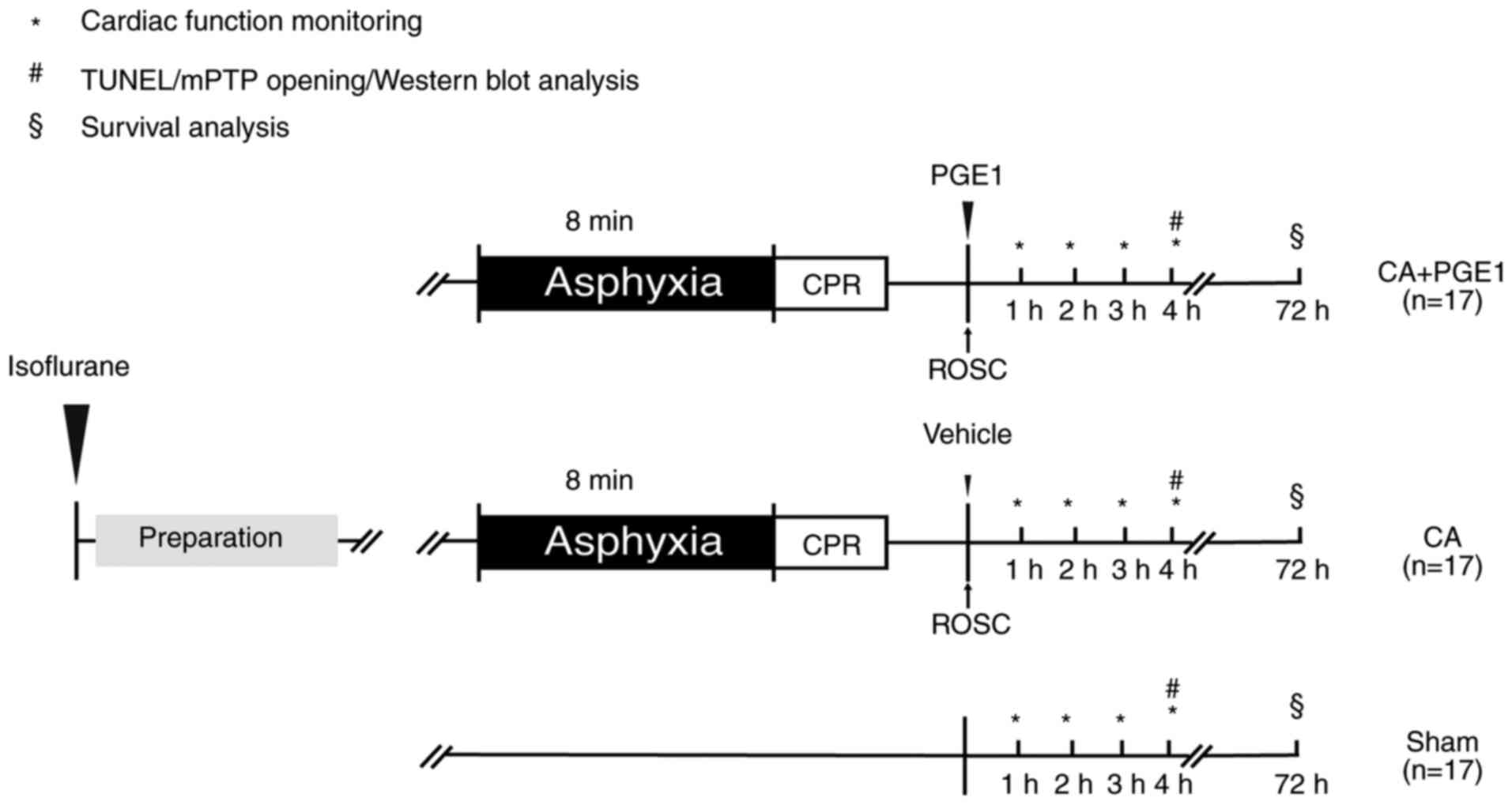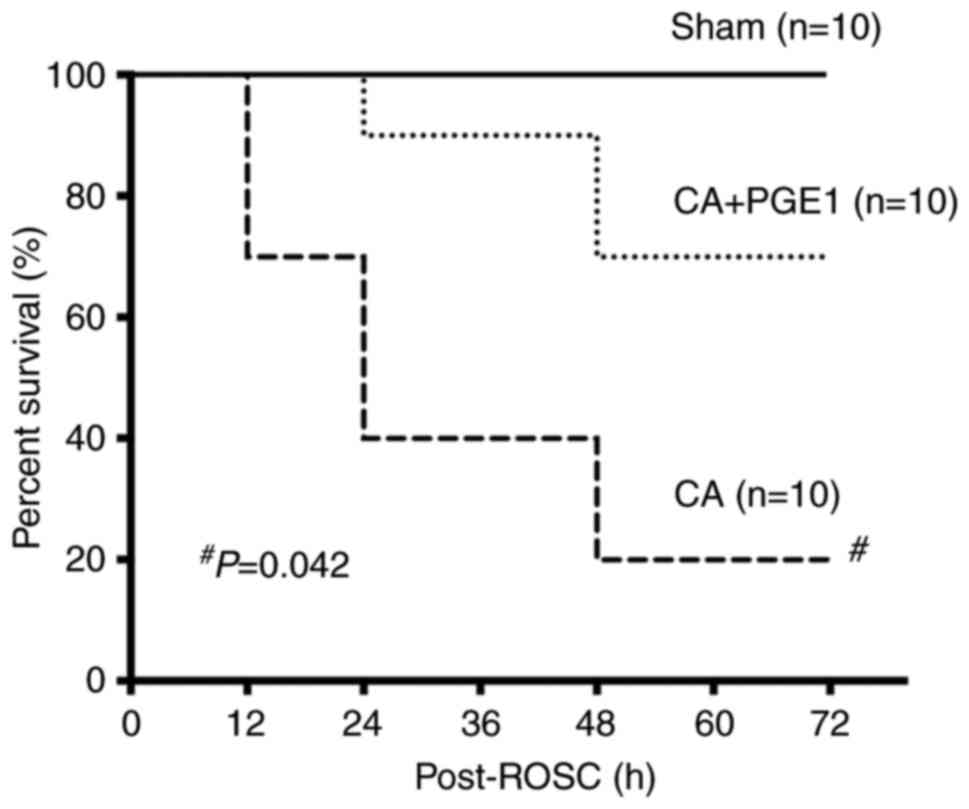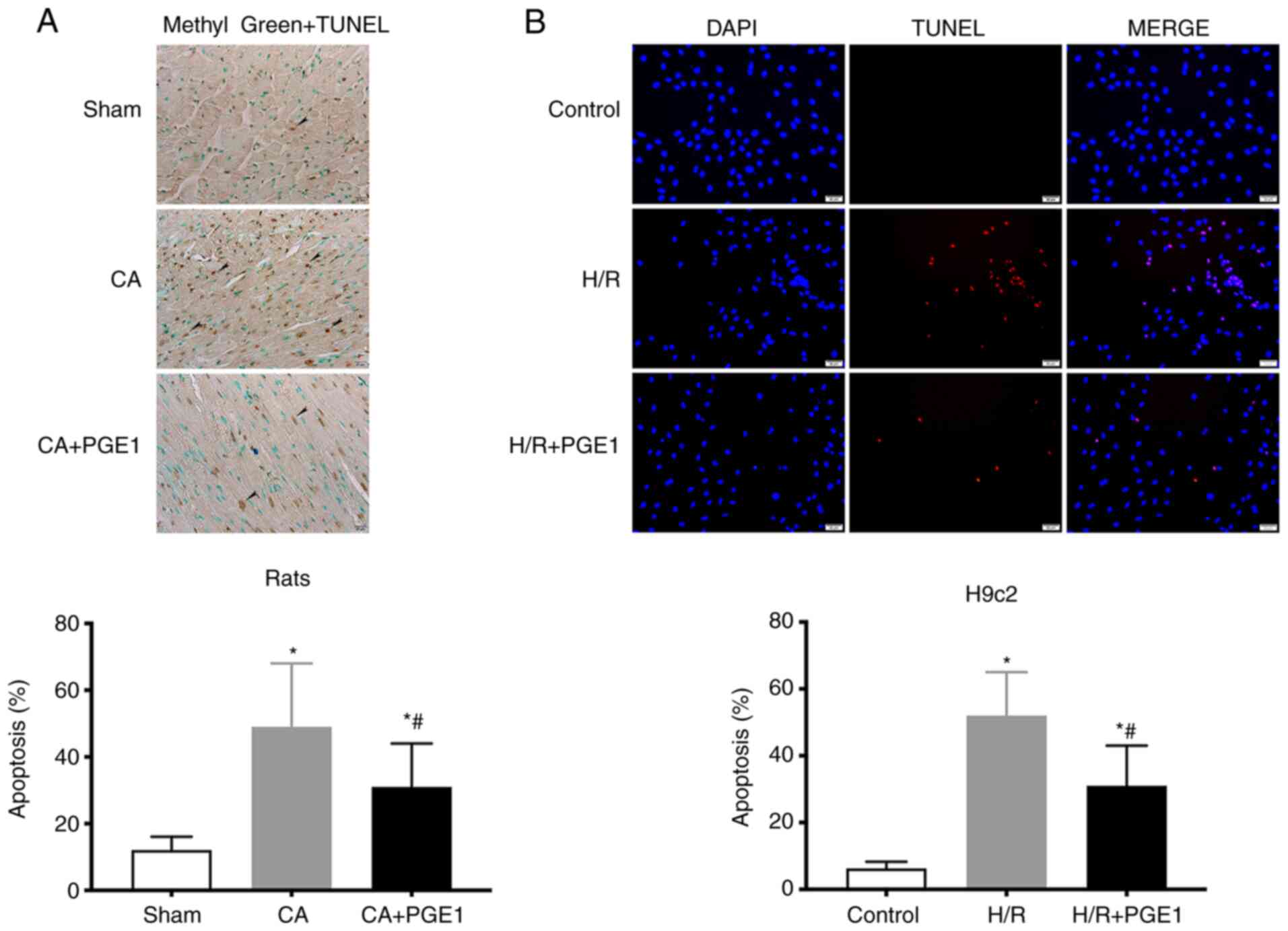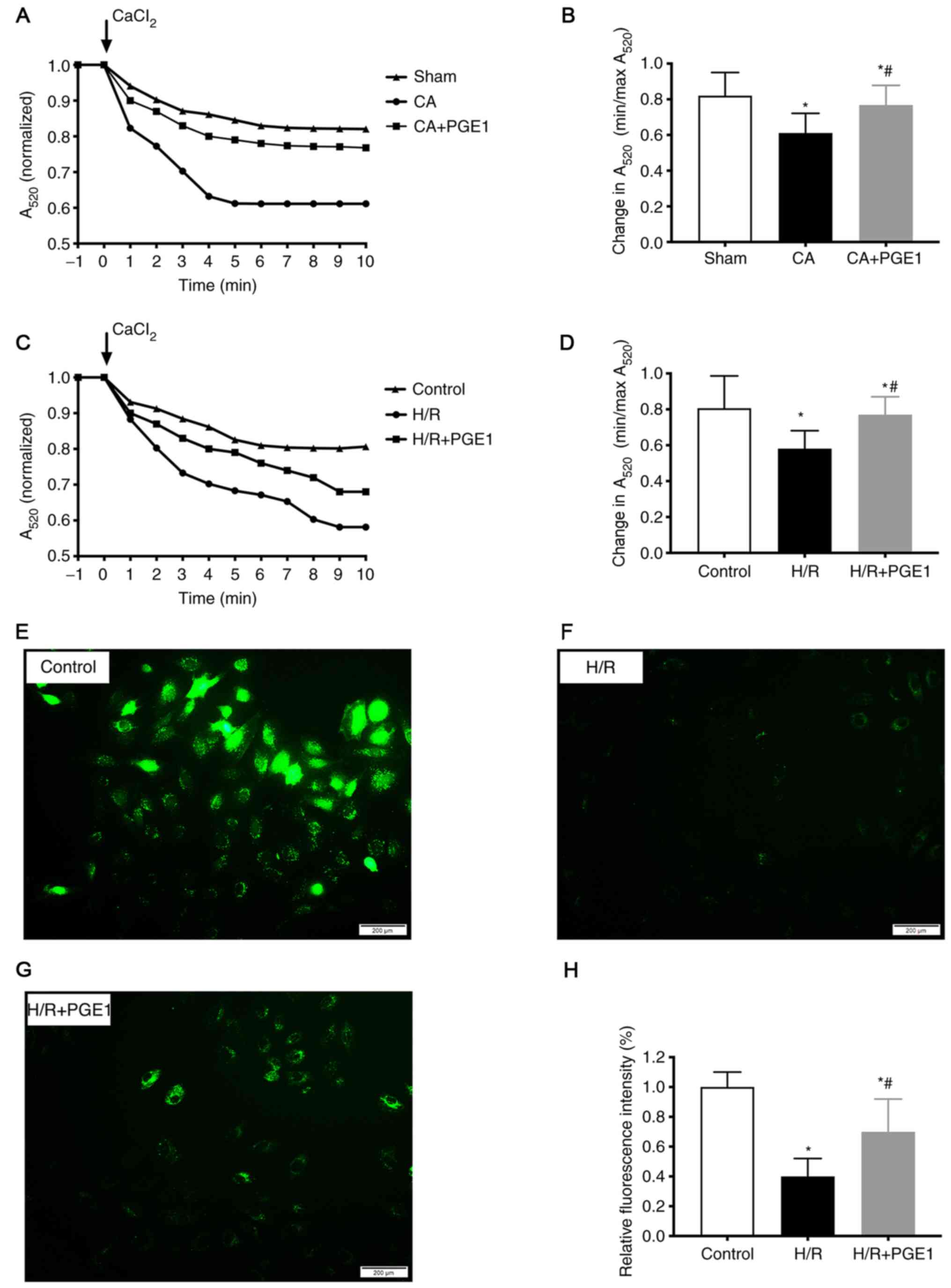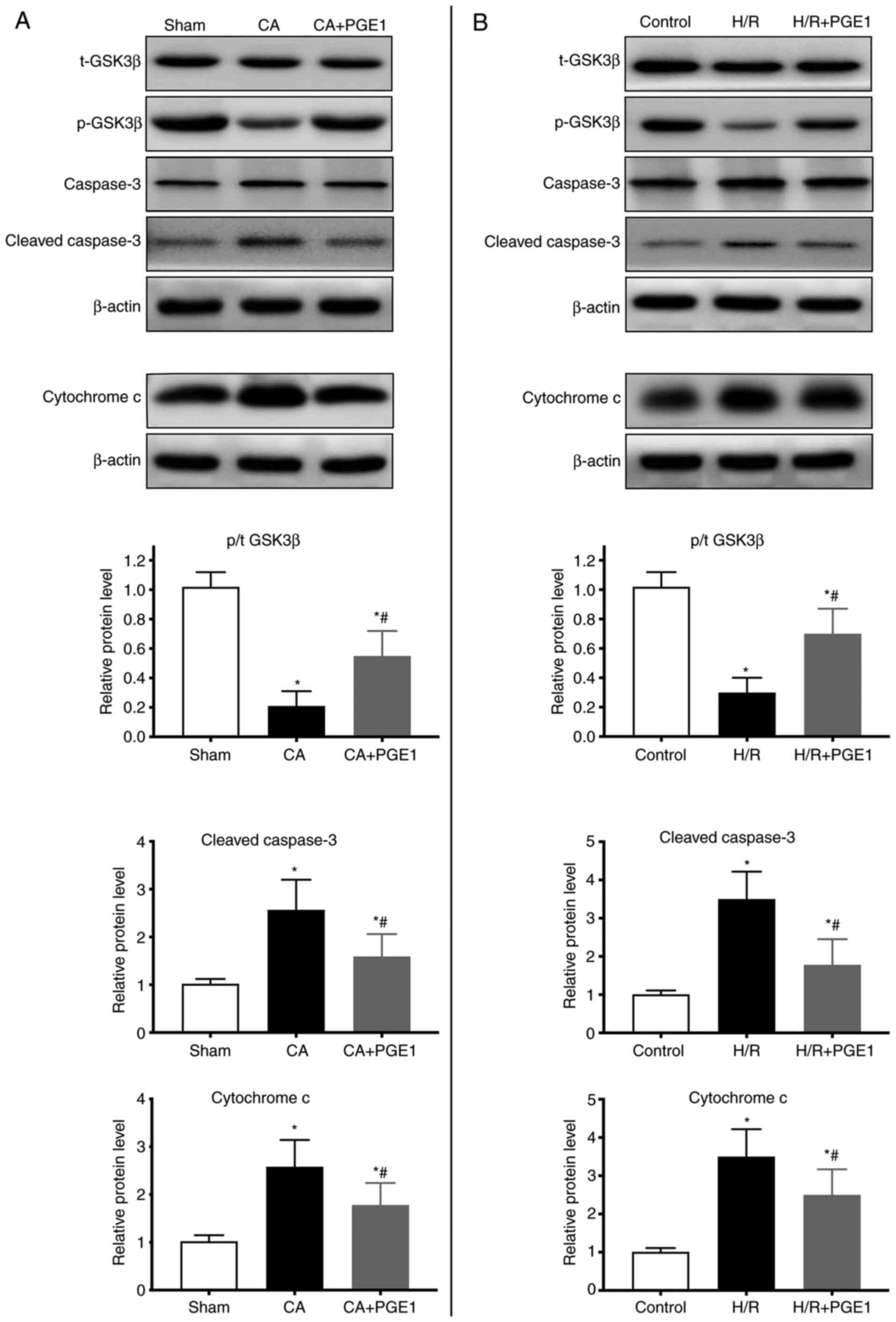|
1
|
Neumar RW: Doubling cardiac arrest
survival by 2020: Achieving the American heart association impact
goal. Circulation. 134:2037–2039. 2016. View Article : Google Scholar
|
|
2
|
Andersen LW, Holmberg MJ, Berg KM, Donnino
MW and Granfeldt A: In-hospital cardiac arrest: A review. JAMA.
321:1200–1210. 2019. View Article : Google Scholar
|
|
3
|
Jentzer JC, Chonde MD, Shafton A, Abu-Daya
H, Chalhoub D, Althouse AD and Rittenberger JC: Echocardiographic
left ventricular systolic dysfunction early after resuscitation
from cardiac arrest does not predict mortality or vasopressor
requirements. Resuscitation. 106:58–64. 2016. View Article : Google Scholar
|
|
4
|
Laurent I, Monchi M, Chiche JD, Joly LM,
Spaulding C, Bourgeois B, Cariou A, Rozenberg A, Carli P, Weber S
and Dhainaut JF: Reversible myocardial dysfunction in survivors of
out-of-hospital cardiac arrest. J Am Coll Cardiol. 40:2110–2116.
2002. View Article : Google Scholar
|
|
5
|
Ruiz-Bailen M, Aguayo de Hoyos E,
Ruiz-Navarro S, Díaz-Castellanos MA, Rucabado-Aguilar L,
Gómez-Jiménez FJ, Martínez-Escobar S, Moreno RM and Fierro-Rosón J:
Reversible myocardial dysfunction after cardiopulmonary
resuscitation. Resuscitation. 66:175–181. 2005. View Article : Google Scholar
|
|
6
|
Jentzer JC, Chonde MD and Dezfulian C:
Myocardial dysfunction and shock after cardiac arrest. Biomed Res
Int. 2015:3147962015. View Article : Google Scholar
|
|
7
|
Chonde M, Flickinger KL, Sundermann ML,
Koller AC, Salcido DD, Dezfulian C, Menegazzi JJ and Elmer J:
Intra-Arrest administration of cyclosporine and methylprednisolone
does not reduce postarrest myocardial dysfunction. Biomed Res Int.
2019:65390502019. View Article : Google Scholar
|
|
8
|
Liu S, Xu J, Gao Y, Shen P, Xia S, Li Z
and Zhang M: Multi-organ protection of ulinastatin in traumatic
cardiac arrest model. World J Emerg Surg. 13:512018. View Article : Google Scholar
|
|
9
|
Heusch G, Boengler K and Schulz R:
Inhibition of mitochondrial permeability transition pore opening:
The Holy Grail of cardioprotection. Basic Res Cardiol. 105:151–154.
2010. View Article : Google Scholar
|
|
10
|
Wu HY, Huang CH, Lin YH, Wang CC and Jan
TR: Cannabidiol induced apoptosis in human monocytes through
mitochondrial permeability transition pore-mediated ROS production.
Free Radic Biol Med. 124:311–318. 2018. View Article : Google Scholar
|
|
11
|
Sileikyte J and Forte M: The mitochondrial
permeability transition in mitochondrial disorders. Oxid Med Cell
Longev. 2019:34030752019. View Article : Google Scholar
|
|
12
|
Morciano G, Bonora M, Campo G, Aquila G,
Rizzo P, Giorgi C, Wieckowski MR and Pinton P: Mechanistic role of
mPTP in ischemia-reperfusion injury. Adv Exp Med Biol. 982:169–189.
2017. View Article : Google Scholar
|
|
13
|
Huang CH, Tsai MS, Hsu CY, Su YJ, Wang TD,
Chang WT and Chen WJ: Post-cardiac arrest myocardial dysfunction is
improved with cyclosporine treatment at onset of resuscitation but
not in the reperfusion phase. Resuscitation. 82 (Suppl 2):S41–S47.
2011. View Article : Google Scholar
|
|
14
|
Cour M, Loufouat J, Paillard M, Augeul L,
Goudable J, Ovize M and Argaud L: Inhibition of mitochondrial
permeability transition to prevent the post-cardiac arrest
syndrome: A pre-clinical study. Eur Heart J. 32:226–235. 2011.
View Article : Google Scholar
|
|
15
|
Hew MR and Gerriets V: Prostaglandin E1.
StatPearls; Treasure Island, FL: 2019
|
|
16
|
Weiss T, Fischer D, Hausmann D and Weiss
C: Endothelial function in patients with peripheral vascular
disease: Influence of prostaglandin E1. Prostaglandins Leukot
Essent Fatty Acids. 67:277–281. 2002. View Article : Google Scholar
|
|
17
|
Schutte H, Lockinger A, Seeger W and
Grimminger F: Aerosolized PGE1, PGI2 and nitroprusside protect
against vascular leakage in lung ischaemia-reperfusion. Eur Respir
J. 18:15–22. 2001. View Article : Google Scholar
|
|
18
|
Johnson RG: Prostaglandin E1 and
myocardial reperfusion injury. Crit Care Med. 28:2649–2650. 2000.
View Article : Google Scholar
|
|
19
|
Zhu H, Ding Y, Xu X, Li M, Fang Y, Gao B,
Mao H, Tong G, Zhou L and Huang J: Prostaglandin E1 protects
coronary microvascular function via the glycogen synthase kinase
3β-mitochondrial permeability transition pore pathway in rat hearts
subjected to sodium laurate-induced coronary microembolization. Am
J Transl Res. 9:2520–2534. 2017.
|
|
20
|
Fang WT, Li HJ and Zhou LS: Protective
effects of prostaglandin E1 on human umbilical vein endothelial
cell injury induced by hydrogen peroxide. Acta Pharmacol Sin.
31:485–492. 2010. View Article : Google Scholar
|
|
21
|
Wei L, Zhao W, Hu Y, Wang X, Liu X, Zhang
P and Han F: Exploration of the optimal dose of HOE-642 for the
protection of neuronal mitochondrial function after cardiac arrest
in rats. Biomed Pharmacother. 110:818–824. 2019. View Article : Google Scholar
|
|
22
|
Kim T, Paine MG, Meng H, Xiaodan R, Cohen
J, Jinka T, Zheng H, Cranford JA and Neumar RW: Combined intra- and
post-cardiac arrest hypothermic-targeted temperature management in
a rat model of asphyxial cardiac arrest improves survival and
neurologic outcome compared to either strategy alone.
Resuscitation. 107:94–101. 2016. View Article : Google Scholar
|
|
23
|
Huang CH, Tsai MS, Chiang CY, Su YJ, Wang
TD, Chang WT, Chen HW and Chen WJ: Activation of mitochondrial
STAT-3 and reduced mitochondria damage during hypothermia treatment
for post-cardiac arrest myocardial dysfunction. Basic Res Cardiol.
110:592015. View Article : Google Scholar
|
|
24
|
Yin L, Yang Z, Yu H, Qian J, Zhao S, Wang
J, Wu X, Cahoon J and Tang W: Changes in sublingual
microcirculation is closely related with that of bulbar
conjunctival microcirculation in a rat model of cardiac arrest.
Shock. 45:428–433. 2016. View Article : Google Scholar
|
|
25
|
Keilhoff G, Esser T, Titze M, Ebmeyer U
and Schild L: High-potential defense mechanisms of neocortex in a
rat model of transient asphyxia induced cardiac arrest. Brain Res.
1674:42–54. 2017. View Article : Google Scholar
|
|
26
|
Uray T, Empey PE, Drabek T, Stezoski JP,
Janesko-Feldman K, Jackson T, Garman RH, Kim F, Kochanek PM and
Dezfulian C: Nitrite pharmacokinetics, safety and efficacy after
experimental ventricular fibrillation cardiac arrest. Nitric Oxide.
93:71–77. 2019. View Article : Google Scholar
|
|
27
|
Incagnoli P, Ramond A, Joyeux-Faure M,
Pepin JL, Levy P and Ribuot C: Erythropoietin improved initial
resuscitation and increased survival after cardiac arrest in rats.
Resuscitation. 80:696–700. 2009. View Article : Google Scholar
|
|
28
|
McAdams RM, McPherson RJ, Dabestani NM,
Gleason CA and Juul SE: Left ventricular hypertrophy is prevalent
in sprague-dawley rats. Comp Med. 60:357–363. 2010.
|
|
29
|
Magnet IAM, Ettl F, Schober A, Warenits
AM, Grassmann D, Wagne M, Schriefl C, Clodi C, Teubenbacher U,
Högler S, et al: Extracorporeal life support increases survival
after prolonged ventricular fibrillation cardiac arrest in the rat.
Shock. 48:674–680. 2017. View Article : Google Scholar
|
|
30
|
Huang X, Zuo L, Lv Y, Chen C, Yang Y, Xin
H, Li Y and Qian Y: Asiatic acid attenuates myocardial
Ischemia/Reperfusion injury via Akt/GSK-3β/HIF-1α signaling in rat
H9c2 Cardiomyocytes. Molecules. 21:12482016. View Article : Google Scholar
|
|
31
|
Pu Y, Wu D, Lu X and Yang L: Effects of
GCN2/eIF2α on myocardial ischemia/hypoxia reperfusion and
myocardial cells injury. Am J Transl Res. 11:5586–5598. 2019.
|
|
32
|
Kang Y: Management of post-cardiac arrest
syndrome. Acute Crit Care. 34:173–178. 2019. View Article : Google Scholar
|
|
33
|
Vognsen M, Fabian-Jessing BK, Secher N,
Løfgren B, Dezfulian C, Andersen LW and Granfeldt A: Contemporary
animal models of cardiac arrest: A systematic review.
Resuscitation. 113:115–123. 2017. View Article : Google Scholar
|
|
34
|
Piao L, Fang YH, Hamanaka RB, Mutlu GM,
Dezfulian C, Archer SL and Sharp WW: Suppression of
superoxide-hydrogen peroxide production at Site IQ of mitochondrial
Complex I attenuates myocardial stunning and improves postcardiac
arrest outcomes. Crit Care Med. 48:e133–e140. 2020. View Article : Google Scholar
|
|
35
|
Zhao Z, Qu F, Liu R and Xia Y:
Differential expression of miR-142-3p protects cardiomyocytes from
myocardial ischemia-reperfusion via TLR4/NFκB axis. J Cell Biochem.
Nov 20–2019.(Epub ahead of print). doi: 10.1002/jcb.29506.
|
|
36
|
Gu W, Li C, Yin W, Guo Z, Hou X and Zhang
D: Shen-fu injection reduces postresuscitation myocardial
dysfunction in a porcine model of cardiac arrest by modulating
apoptosis. Shock. 38:301–306. 2012. View Article : Google Scholar
|
|
37
|
Kuznetsov AV, Javadov S, Margreiter R,
Grimm M, Hagenbuchner J and Ausserlechner MJ: The role of
mitochondria in the mechanisms of Cardiac Ischemia-Reperfusion
injury. Antioxidants (Basel). 8:4542019. View Article : Google Scholar
|
|
38
|
Zhou X, Qu Y, Gan G, Zhu S, Huang Y, Liu
Y, Zhu J, Xie B and Tan Z: Cyclosporine a plus ischemic
postconditioning improves neurological function in rats after
cardiac resuscitation. Neurocrit Care. 32:812–821. 2020. View Article : Google Scholar
|
|
39
|
Zheng JH, Xie L, Li N, Fu ZY, Tan XF, Tao
R, Qin T and Chen MH: PD98059 protects the brain against
mitochondrial-mediated apoptosis and autophagy in a cardiac arrest
rat model. Life Sci. 232:1166182019. View Article : Google Scholar
|
|
40
|
Wang H, Chen S, Zhang Y, Xu H and Sun H:
Electroacupuncture ameliorates neuronal injury by
Pink1/Parkin-mediated mitophagy clearance in cerebral
ischemia-reperfusion. Nitric Oxide. 91:23–34. 2019. View Article : Google Scholar
|
|
41
|
Sun T, Ding W, Xu T, Ao X, Yu T, Li M, Liu
Y, Zhang X, Hou L and Wang J: Parkin regulates programmed necrosis
and myocardial ischemia/reperfusion injury by targeting
cyclophilin-D. Antioxid Redox Signal. 31:1177–1193. 2019.
View Article : Google Scholar
|
|
42
|
Cour M, Abrial M, Jahandiez V, Loufouat J,
Belaïdi E, Gharib A, Varennes A, Monneret G, Thibault H, Ovize M
and Argaud L: Ubiquitous protective effects of cyclosporine A in
preventing cardiac arrest-induced multiple organ failure. J Appl
Physiol (1985). 117:930–936. 2014. View Article : Google Scholar
|
|
43
|
Chalkias A, Kuzovlev A, Noto A, d'Aloja E
and Xanthos T: Identifying the role of cytochrome c in
post-resuscitation pathophysiology. Am J Emerg Med. 33:1826–1830.
2015. View Article : Google Scholar
|
|
44
|
Sun L, Jia H, Ma L, Yu M, Yang Y, Liu Y,
Zhang H and Zou Z: Metabolic profiling of hypoxia/reoxygenation
injury in H9c2 cells reveals the accumulation of phytosphingosine
and the vital role of Dan-Shen in Xin-Ke-Shu. Phytomedicine.
49:83–94. 2018. View Article : Google Scholar
|
|
45
|
Borutaite V and Brown GC: Mitochondria in
apoptosis of ischemic heart. FEBS Lett. 541:1–5. 2003. View Article : Google Scholar
|
|
46
|
Garcia NA, Moncayo-Arlandi J, Vazquez A,
Genovés P, Calvo CJ, Millet J, Martí N, Aguado C, Knecht E,
Valiente-Alandi I, et al: Hydrogen sulfide improves cardiomyocyte
function in a cardiac arrest model. Ann Transplant. 22:285–295.
2017. View Article : Google Scholar
|
|
47
|
Yang K, Chen Z, Gao J, Shi W, Li L, Jiang
S, Hu H, Liu Z, Xu D and Wu L: The key roles of GSK-3β in
regulating mitochondrial activity. Cell Physiol Biochem.
44:1445–1459. 2017. View Article : Google Scholar
|
|
48
|
Nikolaou PE, Boengler K, Efentakis P,
Vouvogiannopoulou K, Zoga A, Gaboriaud-Kolar N, Myrianthopoulos V,
Alexakos P, Kostomitsopoulos N, Rerras I, et al: Investigating and
re-evaluating the role of glycogen synthase kinase 3 beta kinase as
a molecular target for cardioprotection by using novel
pharmacological inhibitors. Cardiovasc Res. 115:1228–1243. 2019.
View Article : Google Scholar
|
|
49
|
Tanaka T, Saotome M, Katoh H, Satoh T,
Hasan P, Ohtani H, Satoh H, Hayashi H and Maekawa Y: Glycogen
synthase kinase-3β opens mitochondrial permeability transition pore
through mitochondrial hexokinase II dissociation. J Physiol Sci.
68:865–871. 2018. View Article : Google Scholar
|
|
50
|
Cai LL, Xu HT, Wang QL, Zhang YQ, Chen W,
Zheng DY, Liu F, Yuan HB, Li YH and Fu HL: EP4 activation
ameliorates liver ischemia/reperfusion injury via
ERK1/2GSK3β-dependent MPTP inhibition. Int J Mol Med. 45:1825–1837.
2020.
|
|
51
|
Kimes BW and Brandt BL: Properties of a
clonal muscle cell line from rat heart. Exp Cell Res. 98:367–381.
1976. View Article : Google Scholar
|
|
52
|
Kwon WY, Suh GJ, Kim KS, Jung YS, Kim SH,
Lee AR, You KM and Park MJ: Niacin and selenium attenuate brain
injury after cardiac arrest in rats by up-regulating DJ-1-akt
signaling. Crit Care Med. 46:e788–e796. 2018. View Article : Google Scholar
|
|
53
|
Zhang R, Liu B, Fan X, Wang W, Xu T, Wei
S, Zheng W, Yuan Q, Gao L, Yin X, et al: Aldehyde dehydrogenase 2
protects against post-cardiac arrest myocardial dysfunction through
a novel mechanism of suppressing mitochondrial reactive oxygen
species production. Front Pharmacol. 11:3732020. View Article : Google Scholar
|
|
54
|
Zhou T, Lin H, Jiang L, Yu T, Zeng C, Liu
J and Yang Z: Mild hypothermia protects hippocampal neurons from
oxygen-glucose deprivation injury through inhibiting caspase-3
activation. Cryobiology. 80:55–61. 2018. View Article : Google Scholar
|
|
55
|
Yeh CH, Chen TP, Wang YC, Lin YM and Fang
SW: MicroRNA-27a regulates cardiomyocytic apoptosis during
cardioplegia-induced cardiac arrest by targeting interleukin
10-related pathways. Shock. 38:607–614. 2012. View Article : Google Scholar
|















